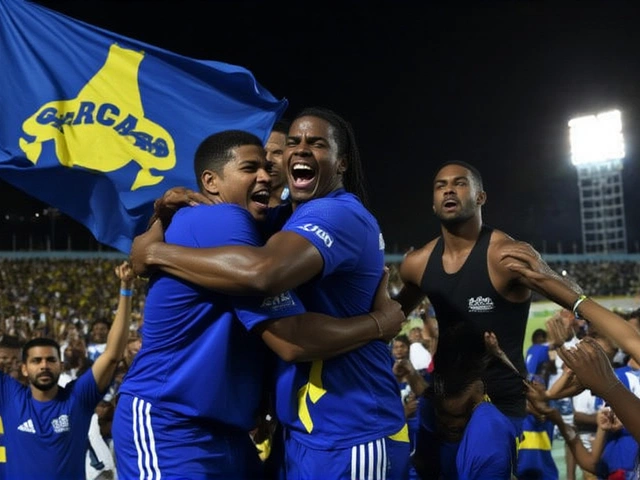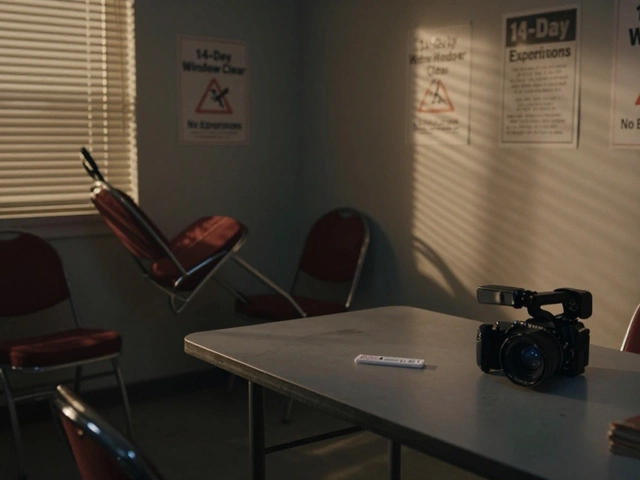
On a freezing Tuesday night in Seoul, fewer than 10,000 fans showed up to watch the South Korean national team take on Ghana at the Seoul World Cup Stadium—a stadium designed to hold 66,000. The team featured Son Heung-min, Lee Kang-in, and Kim Min-jae, three of the most recognizable names in global football. Yet the stands were ghostly. The cold wasn’t the only thing biting that night. The real chill came from the silence. This wasn’t an anomaly. It was the latest symptom of a collapse in trust—one that’s threatening to undermine South Korea’s football future as the 2026 FIFA World Cup looms.
The Numbers Don’t Lie
Just six days earlier, the same stadium had sold out for a match against Brazil—not because Koreans were excited about their own team, but because they wanted to see Vinicius Junior and Rodrygo. On October 12, 2025, 63,237 fans packed in for that game. Two days later, against Paraguay, attendance plummeted to 22,206. That was the lowest turnout at Seoul World Cup Stadium for a national team match in a decade. By November 18, 2025, with Ghana in town, the official count hovered below 10,000. Nearly 44,000 seats went unfilled. Around 10,000 tickets were canceled on match day alone, according to Chosun Biz.
The Korea Football Association (KFA) had once enjoyed near-perfect sellouts. In 2023 and 2024, ticket reservation rates hovered at 95%. By 2025, that number had dropped to 78%. And it’s not just Seoul. The October 14, 2025 match against Paraguay drew barely a third of capacity. The October 2024 match against Iraq—still under previous management—got 35,198. Since then, every match has struggled to break 40,000. Even the March 2025 home game against Jordan, which sold out, now feels like a distant memory.
Who’s to Blame?
The finger-pointing has begun. And it’s not just about the weather. Temperatures dipped below zero Celsius on match night, but that doesn’t explain why 43,800 tickets remained unsold as of 5:30 PM. Nor does it explain why fans booed during the 5-0 loss to Brazil in October, or why the home section was nearly full while the opposite stands remained hollow.
The real issue is leadership. Hong Myung-bo, the 56-year-old former captain and 2002 World Cup hero, took over as head coach in 2024. His appointment was controversial from the start. Critics called the hiring process “opaque.” Fans questioned why a man with no top-level club coaching experience was handed the reins. Lee Kang-in publicly defended him in June 2025, calling him “our boss.” But fans didn’t buy it. The boos didn’t stop.
Meanwhile, Korea Football Association President Chung Mong-gyu, the 74-year-old chairman of Hyundai Motor Group, has faced mounting pressure. His office has been accused of prioritizing corporate interests over fan engagement. Representative Jin Jong-oh, a four-time Olympic gold medalist and lawmaker, sent a formal questionnaire to the KFA demanding answers on the attendance drop. He wanted data on how Hong’s hiring, the team’s results since July 2024, and the lack of transparency were driving fans away.
The Financial Fallout
The numbers aren’t just emotional—they’re economic. The difference in ticket revenue between the October 12 match against Brazil (63,237 attendees) and the October 14 match against Paraguay (22,206) was a staggering 4.7 billion won ($3.3 million USD), per MK News. That’s not just lost money. It’s lost momentum. Sponsorship deals, broadcast rights, and merchandise sales all depend on live attendance. The KFA’s entire revenue model for national team matches is crumbling.
And here’s the cruel irony: the team’s star players are at their peak. Son Heung-min is still one of the best forwards in Europe. Kim Min-jae is a defensive rock for Bayern Munich. Lee Kang-in is a creative force at PSG. Yet the fans aren’t showing up. Why? Because they don’t believe in the vision. They don’t trust the leadership. They’ve seen too many losses—and too many empty promises.
A Nation in Disarray
It wasn’t always like this. In the early 2010s, South Korea’s national team had K-pop-level hype. Tickets were scalped. Families planned weekends around matches. Stadiums roared. Now, the atmosphere is more like a community center game. The first tier of the home section? Filled. The second tier? Almost empty. The away side? A ghost town.
The KFA insists they’re “analyzing the situation.” But analysis isn’t enough. They need action. They need to rebuild trust. They need to stop treating fans as afterthoughts and start treating them as partners.
What’s Next?
The next official match is a World Cup qualifier in March 2026. If attendance doesn’t rebound, the KFA risks losing not just revenue—but legitimacy. Hong Myung-bo has said, “We will try harder.” That’s not a strategy. It’s a plea.
Experts say the solution lies in three areas: transparency in coaching decisions, fan engagement programs that go beyond ticket discounts, and a clear, long-term identity for the team—not just a collection of stars. Without that, even Son Heung-min’s brilliance won’t fill the seats.
Frequently Asked Questions
Why are fans not showing up despite having world-class players?
Fans aren’t just buying tickets for individual stars—they’re investing in a team’s identity and leadership. The controversy around Hong Myung-bo’s appointment, the team’s 5-0 loss to Brazil, and the KFA’s lack of transparency have eroded trust. Even Son Heung-min’s presence can’t compensate for a perceived lack of direction or accountability.
How does this affect South Korea’s chances at the 2026 FIFA World Cup?
Low attendance weakens home advantage, reduces revenue for player development, and signals to international scouts that the program is in decline. FIFA and sponsors pay attention to fan engagement. If the KFA can’t rally support at home, it risks losing funding and influence ahead of the tournament.
What role did the KFA’s hiring process play in this crisis?
The opaque selection of Hong Myung-bo in 2024, without public interviews or clear criteria, fueled suspicion that the role was awarded based on connections rather than merit. This perception—backed by the team’s poor results—made fans feel excluded from the decision-making process, turning them into disengaged spectators rather than passionate supporters.
Has the KFA responded to the attendance crisis?
The KFA has issued vague statements about “improving performance,” but no concrete plan has been announced. Representative Jin Jong-oh’s office received a formal questionnaire in late 2025, yet no public response or reform timeline has been released. Without transparency, fans remain skeptical.
Is this decline unique to South Korea, or is it happening elsewhere?
Similar trends are visible in Japan and Saudi Arabia, where star players don’t always translate to fan turnout. But South Korea’s drop is more dramatic: from 95% sellouts to under 80% in just two years. The combination of poor results, leadership distrust, and a failure to connect with younger fans makes this crisis uniquely severe.
What can be done to reverse this trend?
The KFA must open its decision-making process, involve former players in fan outreach, and create affordable, family-friendly match experiences—not just discounts. They need to rebuild emotional connection, not just sell tickets. A public forum with Hong Myung-bo and Chung Mong-gyu, streamed live, could be the first real step toward healing.


